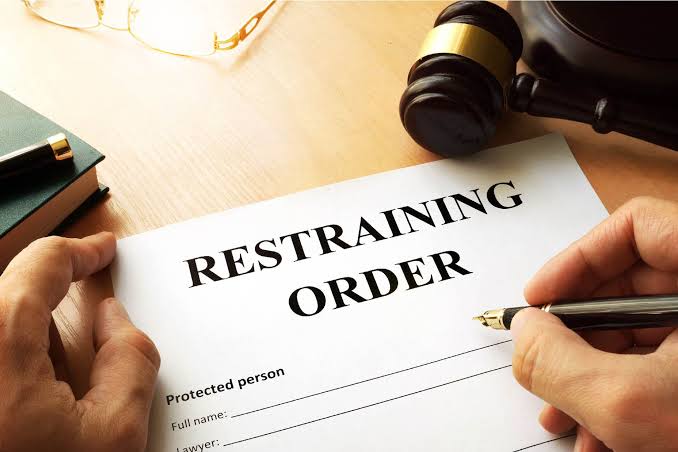What Evidence Is Needed to Obtain a Restraining Order?
When you feel threatened or harassed, one of the ways to protect yourself is by seeking a restraining order. Restraining orders are legal tools that help prevent someone from coming into contact with you or your property. But before you can obtain one, it’s essential to know what type of evidence you’ll need to support your case.
If you’re wondering, can you get a restraining order for no reason, the answer is no. A restraining order must be based on specific incidents or threats. Courts won’t grant one without clear evidence that supports the claim of harassment, violence, or fear for safety.
In this blog, we’ll take a closer look at the types of evidence necessary to obtain a restraining order and the steps involved in the process.
What Is a Restraining Order?
A restraining order is a legal order issued by a court to protect someone from being harmed, harassed, or threatened by another individual. It’s meant to prevent future contact with the person issuing the order. There are several kinds of restraining orders, such as domestic violence orders, civil harassment orders, and workplace violence orders.
Each type has its requirements, but all of them require compelling evidence to show that a restraining order is necessary for your safety.
Types of Evidence to Support Your Restraining Order Request
To obtain a restraining order, you need to demonstrate that the person you’re seeking protection from has engaged in specific harmful behaviors. Courts require substantial evidence to make an informed decision, so it’s important to gather as much proof as possible. Here’s what you may need:
1. Documented Threats or Harassment
One of the most crucial pieces of evidence is any direct threats or harassment that have occurred. This includes:
- Text messages, emails, or social media messages: If the person has sent threatening or harassing messages, you should save these messages as evidence.
- Recorded phone calls or voicemails: If the individual has made threatening phone calls or left disturbing voicemails, these can be critical pieces of evidence.
- Written threats: Any notes or letters that have been left threatening harm or intimidation can be used to support your case.
Remember, if you’re asking, can you get a restraining order for no reason, the answer lies in the absence of credible threats. The court must see a pattern of threatening or harassing actions that justify the need for protection.
2. Physical Evidence of Abuse
If the person has physically harmed you, the court will require evidence of the abuse. This can include:
- Medical records or hospital visits: Documentation from your doctor or hospital showing injuries resulting from physical abuse is highly valuable.
- Photographs of injuries: Take photos of any visible bruises, cuts, or other signs of injury caused by the person.
- Police reports: If the abuse was reported to law enforcement, the police report can serve as a vital piece of evidence.
Physical harm or violent threats create a heightened sense of urgency when seeking a restraining order. Without such evidence, proving your case may be more challenging.
3. Witness Testimony
Witnesses who have seen the abuse or harassment firsthand can be critical to your case. This includes:
- Friends or family members: If someone witnessed the behavior, their testimony could help establish a pattern of abuse or intimidation.
- Neighbors or coworkers: If the person engaged in any disturbing behavior in front of others, these witnesses can testify on your behalf.
Their testimony can lend credibility to your claims and strengthen your case.
4. Police Reports and Incident Records
If you’ve called the police on any occasions where the person harassed or threatened you, the police reports can serve as official evidence in your case. These reports document the incidents and the actions taken by law enforcement.
Even if no arrests were made, the fact that law enforcement was involved in addressing the issue shows that there was a valid reason to be concerned for your safety.
5. Patterns of Behavior
If the person has been consistently showing harmful behavior, such as stalking, unwanted contact, or a history of violence, this can establish a pattern that supports your request for a restraining order.
If you’re wondering can you get a restraining order for no reason, the court won’t grant it unless there’s a clear, documented history of threatening or harmful actions. One-off incidents typically won’t be enough.
Steps to Take When Applying for a Restraining Order
Once you’ve gathered your evidence, the next step is to file for a restraining order. Here’s an overview of the process:
- File a Petition You’ll need to file a petition at your local court. This petition outlines your reasons for needing protection and includes details about the person you’re seeking protection from. Be specific about the incidents and include any evidence you’ve gathered.
- After your petition is filed, the court will organize a hearing. At this hearing, both you and the person you’re requesting the order against will have an opportunity to present your case. Make sure to bring all your evidence and any witnesses who can support your claims.
- Temporary Restraining Order In some cases, the court may issue a temporary restraining order before the hearing. This order will provide immediate protection until a final decision is made.
- Final Restraining Order If the court finds that you’ve presented enough evidence, they may issue a permanent restraining order. This order will typically last for a set period, such as one to five years, depending on the circumstances.
Can You Get a Restraining Order for No Reason?
In short, no. The court will not grant a restraining order without sufficient evidence. The law requires that there be a clear reason for your concern, and the evidence you present must support your claim. Without concrete proof, a restraining order is unlikely to be issued.
It’s important to understand that while restraining orders are powerful tools, they aren’t automatically granted. You’ll need to present a compelling case to the court that demonstrates your need for protection.
Final Thoughts
Obtaining a restraining order can be a critical step in protecting yourself from harm. However, it requires clear evidence to support your claims. Whether it’s documented threats, physical abuse, or witness testimony, the more evidence you can provide, the stronger your case will be.
If you’re considering applying for a restraining order, or if you have questions about the process, the Law Offices of Sam Byrd can help guide you through the steps. We’re dedicated to ensuring that your rights are protected and that you have the legal support you need to feel safe.







